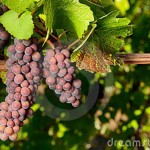Through Rose Colored Wine
For some wine drinkers, pink wine does not evoke an eagerness to take it from bottle, to glass, to palate. Despite that fact, this year celebrates 40 years of White Zinfandel. That’s right, I said it. White Zinfandel. Fret not, what follows is not a diatribe to the merits of White Zin (although I am sure someone out there is willing to write it), rather it is a tip of the hat and nod of the lips to the joy of Rose wine.

What many wine drinker today may not realize is that it wasn’t until 100 A.D., and then again in the 18th century, that wines became the color of red we would recognize in today’s glasses. The current day Provence region of France is one of the main regions that has kept and maintained the glory of pink wine. Most “red” wine was in fact a darker pink more reminiscent of today’s blush colored wine. Even in Bordeaux, the defining term “clairet” was used to refer to the dark pink or “light red” color of the wine.

Many wines have contributed to Rose’s entry and success in the wine game. Pinot Grigio was originally a pink wine. The skin of the grape is a grey/red color, and historically, the skins were added to the grape juice, resulting in a salmon-colored hue. It wasn’t until Georgio Mascarin, the Santa Margherita winemaker, introduced a new winemaking innovation that took Pinot Grigio from a copper-colored rose to the white it is loved today (however, do make sure to keep an eye out for rose Pinot Gris).
Zinfandel was the most popular varietal in the United States from 1973 until 1998 when Chardonnay took command as whites became all the rage. The big award winning Old Vine Zinfandel’s of California are around mainly due to farmers that kept planting the varietal during that time and introduced “white” zinfandel to keep the grape around till it fell back into favor with wine drinkers. And oh has it!
 Most rose wine today is made from brief grape skin contact before fermentation which not only imparts a bit of color but also an added dynamic of flavor that the white counterpart would not have. There is no specific varietal that has to be used to make a Rose; any red-skinned grape will do. However, most winemakers opt for their regional varietals, since they are already known to be grown in a region that supports quality juice. Rarely seen is the Pinot Noir Rose from the famed Marsannay region of Burgundy.
Most rose wine today is made from brief grape skin contact before fermentation which not only imparts a bit of color but also an added dynamic of flavor that the white counterpart would not have. There is no specific varietal that has to be used to make a Rose; any red-skinned grape will do. However, most winemakers opt for their regional varietals, since they are already known to be grown in a region that supports quality juice. Rarely seen is the Pinot Noir Rose from the famed Marsannay region of Burgundy.
Thankfully, Rose wines are again gaining popularity as American wine drinkers are eager to “think out side the box” and appreciate the wonderful world of pink wine. Sparkling or still these wines are a wonderful addition to any summer day or night. They can be the perfect companion for any surf and turf meal, as roses can compliment both land and sea based dished. So next time you pass a wine who’s color reminds you of someone’s face after hearing an inappropriate joke, don’t be shy, reach out and try it!

Jul 17, 2013